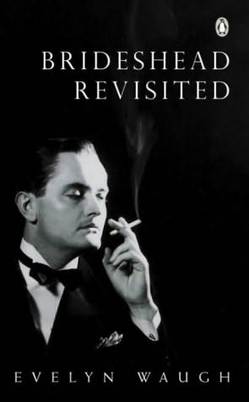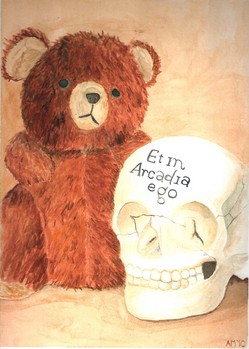This Week's Recommended Read: 'Brideshead Revisited' by Evelyn Waugh

Evelyn Waugh's "Brideshead Revisited" was named by Time magazine as one of the 100 best English-language novels written since 1923.

Preview…It is my belief that Evelyn Waugh’s “Brideshead Revisited” requires a firm commitment to the slow moving story line up-front in order for the reader to enjoy the intriguing characters, memorable plot and lofty themes that develop later in the novel. This 1946 classic was named by Time magazine as one of the 100 best English-language novels written since 1923, and I agree with its inclusion on this list. “Brideshead” boasts a unique set of characters and themes that is hardly comparable to anything else I’ve read—that alone elevates this work of fiction to must-read status.
The tale is told through the eyes of British army officer, Charles Ryder, as he looks back on his love affair and romantic entanglements with the aristocratic, perfunctorily religious and oddly charismatic Flyte family who live at the glorious, gothic Brideshead. Our narrator is first introduced to this set by way of the (oh-how-should-we-describe-him?) infantile, sexually ambiguous Sebastian. Perhaps the most analyzed portion of this book relates to the nature of friendship between these two men. Within the Ann Arbor Classics Book Group, no one could agree whether Sebastian was intended to be portrayed by Waugh as homosexual or if he was simply androgynous. Regardless of our inability to clearly define the relationship between Charles and Sebastian, we are nevertheless moved by the deep bond that forms.
Other resident members of the Flyte family include the matriarch Lady Marchmain—a devout Catholic who draws great strength from her faith and does her best to raise her children accordingly; Brideshead—the stodgy eldest son, not to be confused with the house itself; Cordelia—the youngest of the family that, through her antics, provides a bit of comic relief; and Julia—who (let’s just say) has a great deal in common with her brother, Sebastian. Eventually, the friendships of Charles and his beloved teddy bear Alyosius are not enough to subdue Sebastian’s delicate sensitivities and he turns to drink. His flight to Morocco quickly removes Sebastian from the center of the story’s action.
Nostalgic still of his time with the residents of Brideshead, even though he has reached an admirable level of success as an artist and has married, Charles reunites with Julia by chance during a transatlantic cruise several years later. Both are unhappily married and find a familiar sense of comfort in one another’s arms, thus beginning Charles’s second passionate encounter with a member of the Flyte family.
Evelyn Waugh’s masterfully woven story is rife with beautiful, unexpected word pairings. Indeed, the gracefulness of the prose helps to move the reader along when the plot has taken a break to rest and recharge. The novel grows from a seemingly frivolous account of the old-school English nobility to a vehicle for presenting the reader with profound questions pertaining to the nature of faith, mercy and repentance.

I have presented two symbols that well represent this story. Sebastian’s teddy bear portrays the innocent mindless living of the Flytes when we first meet them early in the story. Near the novel’s beginning schoolboy Charles purchases a human skull with the words “Et in Arcagia ego” carved into its forehead. These words reference a well-known painting, commonly referred to as a memento mori. When the death of the Flyte parents and estrangement of Sebastian bring about a more harsh reality for the characters, all are reminded that the many joys of life are just a precursor to our inevitable demise. -Antonia Maurici, freelance illustrator
You may like this book if…you indulge in elegantly written prose; you are entranced by the age of English nobility; you are dogmatically religious (especially if you are Catholic); you enjoy atypical love stories; you like stories with lots of very serious characters and a few very comical ones; you like teddy bears (this novel made them very popular once more); you like the fact that there’s a lot of meaning stuffed into not a lot of pages; you are moved by unanticipated religious conversions; you like reading about a German in WW2 who is not a Nazi and really has nothing to do with the war at all; you like monks, nuns or Morocco.
You may not like this book if…You have a 50-page rule about stories (if they haven’t grabbed you by then, you give up on them); you must place a label on Charles’ and Sebastian’s relationship; some of the themes hit way too close to home for you—an overbearing mother, alcoholism, love lost; you are driven mad by dynamic Sebastian’s gradual fading from the story and his lack of a clear-cut ending; you don’t want to watch your protagonist transition from likable to somewhat detestable over the course of the novel; you don’t like it when certain aspects of the ending seem a bit contrived.
Melissa LR Handa is the founder and organizer for the Ann Arbor Classics Book Group and the Lead Books Contributor for AnnArbor.com. Her goal is to make classic literature more accessible to the everyday reader.
Antonia Maurici is a freelance illustrator and an avid reader. She has combined her literary enthusiasm with her technical skill to produce this illustrative depiction of "Brideshead Revisited". Antonia can be reached at amaurici@earthlink.net. Be sure to look for more illustrations by Antonia accompanying upcoming articles written by Melissa LR Handa.

